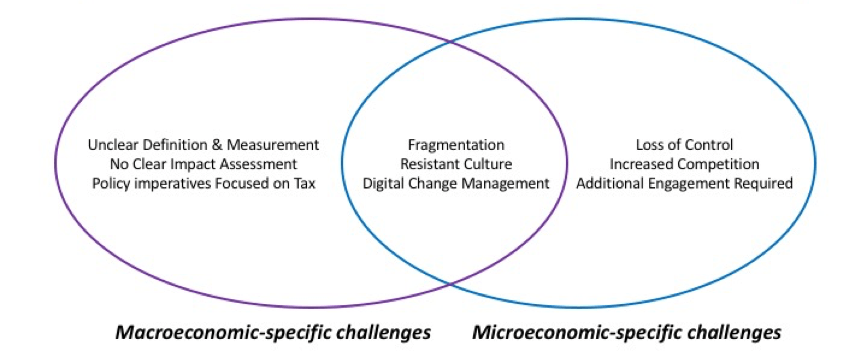As part of my Masters of Applied Science in Technology Innovation Management, we were regularly asked questions about the use of technology. This is the response to one of the questions.
Q: Is the best motivation for involving customers or virtual user communities into product development to give monetary rewards in exchange of their use experiences and knowledge?
Many will agree with the statement that customers must have incentives to innovate and communicate about innovations within the community (Smith et al., 2013). This essay seeks to determine whether the statement “the best motivation for involving customers or virtual user communities into product development is to give monetary rewards in exchange of their use experiences and knowledge” is accurate.
Motivation
Motivation is a theoretical construct used to explain behaviour. It is one of the few psychological concepts to have been fully adopted by popular culture (Meyer & Mahr, 1997); however, there is a fierce debate over the exact definition of motivation in academia, which has lasted over 60 years (Kleinginna & Kleinginna, 1981). Most discussions of motivation assume a stable set of individual needs and values; these are seen as shaping expectations, goals, and attitudes. The two primary types of motivation described in the literature are extrinsic and intrinsic motivation: intrinsic is internal (within the individual) while extrinsic motivation is external (outside the individual) (Leimeister et al., 2009; Hossain, 2012). Extrinsic motives, such as peer recognition, and intrinsic motives, such as fun, curiosity, or support for others, can both play valuable roles in encouraging participation (Smith et al., 2013).
Types of Motivation
Lack of motivation from a knowledge contributor impedes knowledge sharing. Under such circumstances, social capital becomes critical because the resources inherent in the online social network mediate between the individuals and hence foster their intention and activeness to perform this voluntary behaviour (Ardichvili et al., 2003). In short, customers expect a considerable return for their participation in exchange for their considerable engagement and time investments (Harhoff et al., 2003). It is easy to focus on the more tangible form of motivation – extrinsic motivation – particularly when it can be viewed as a simple equation (“do this, get that”). However, Smith et al. (2013) note that most customers typically do not receive financial payment. Adding a financial reward may decrease interaction intensity and creativity (Franke & Shah, 2003). Indeed, a group of studies shows that when people are offered a reward for doing a task that involves some degree of creativity or problem solving—or for doing it well—they will tend to do lower quality work than those offered no reward (Kohn, 1999). Osterloh and Frey’s (2000) research on intrinsic and extrinsic motivation for knowledge sharing suggests that intrinsic motives are much more powerful than are extrinsic (e.g., monetary or administrative) stimuli. The research of Chiu, Hsu, & Wang (2006) concluded that social interaction ties, reciprocity, and identification increased individuals’ quantity of knowledge sharing but not knowledge quality.
Building a Vibrant Community
The posting of knowledge entries by users into product development communities represent only one side of the equation: the supply of new knowledge. For a community to be vibrant, there should be also active participation on the demand side: the organization acknowledging the supply of new knowledge and eliciting more (Cross, Bogatti, & Parker, 2001). Ardichvili et al. (2003) argue that a requirement for a successful virtual community is the members’ (or employees’) willingness to use the community as a source of new knowledge. These two major requirements (willingness to share knowledge and willingness to use the virtual community as a source of knowledge) apply to any community of practice, be it face-to-face or virtual (Ardichvili et al., 2003). Their study dealt with online communities of practice and they found it is necessary to add one more requirement: for a virtual community to be successful, its members need to be comfortable with participating in a computer-mediated, Internet-based community of practice, which involves very little face-to-face communication (Ardichvili et al., 2003).
In summary, the best motivation for involving customers or virtual user communities into product development is not monetary rewards; this approach may be counterproductive, reducing the intensity, creativity, and quality of the input. The literature suggests that the best motivation for involving customers or virtual user communities is to engage the user in a two-way conversation, build on social capital, and provide peer recognition.
[text-blocks id=”individual-consulting”]
References
Ardichvili, A., Page, V., & Wentling, T. 2003. Motivation and barriers to participation in virtual knowledge-sharing communities of practice. Journal of Knowledge Management, 7(1): 64–77.
Brandt, R. 1995. Punished by rewards. Educational Leadership: Journal of the Department of Supervision and Curriculum Development, N.E.A, 53(1): 13–16.
Chaudhary, N., & Bowles, N. 2006. Commercial Tree Nursery Industry. Government of Alberta. http://www1.agric.gov.ab.ca/$department/deptdocs.nsf/all/agdex1370#1.
Chiu, C.-M., Hsu, M.-H., & Wang, E. T. G. 2006. Understanding knowledge sharing in virtual communities: An integration of social capital and social cognitive theories. Decision Support Systems, 42(3): 1872–1888.
Christensen, C. M. 1997. When New Technologies Cause Great Firms to Fail. Boston, Massachusetts: Harvard Business School Press.
Conway, P. 2010. Preservation in the Age of Google: Digitization, Digital Preservation, and Dilemmas. The Library Quarterly: Information, Community, Policy, 80(1): 61–79.
Cummings, J. L., & Holmberg, S. R. 2012. Best-fit Alliance Partners: The Use of Critical Success Factors in a Comprehensive Partner Selection Process. Long Range Planning, 45(2–3): 136–159.
Dilmegani, C., Korkmaz, B., & Lundqvist, M. 2014, December. Public-sector digitization: The trillion-dollar challenge | McKinsey & Company. http://www.mckinsey.com/business-functions/business-technology/our-insights/public-sector-digitization-the-trillion-dollar-challenge.
Fichmann, R. G., Dos Santos, B. L., & & Zheng, Z. 2014. Digital innovation as a fundamental and powerful concept in the information systems curriculum. MIS Quarterly, 38(2): 329–353.
Giordullo, S. 2015, April 17. How Much Do Trees Cost? Angie’s List | Find a Local Business, Ratings, Reviews, Deals. https://www.angieslist.com/articles/how-much-do-trees-cost.htm.
Harshak, A., Schmaus, B., & Dimitrova, D. 2013. Building a digital culture: How to meet the challenge of multichannel digitization. PwC. https://www.lizlance.ca/wp-content/uploads/2023/01/strategyand-building-a-digital-culture.pdf.
Hienerth, C., Lettl, C., & Keinz, P. 2014. Synergies among Producer Firms, Lead Users, and User Communities: The Case of the LEGO Producer–User Ecosystem. Journal of Product Innovation Management, 31(4): 848–866.
Hossain, M. 2012. Users’ motivation to participate in online crowdsourcing platforms. Innovation Management and Technology Research (ICIMTR), 2012 International Conference on, 310–315.
Kleinginna, P. R., Jr, & Kleinginna, A. M. 1981. A categorized list of motivation definitions, with a suggestion for a consensual definition. Motivation and Emotion, 5(3): 263–291.
Kohn, A. 1999. Punished by rewards: The trouble with gold stars, incentive plans, A’s, praise, and other bribes. Houghton Mifflin Harcourt.
Leimeister, J. M., Huber, M., Bretschneider, U., & Krcmar, H. 2009. Leveraging Crowdsourcing: Activation-Supporting Components for IT-Based Ideas Competition. Journal of Management Information Systems, 26(1): 197–224.
Mahr, D., & Lievens, A. 2012. Virtual lead user communities: Drivers of knowledge creation for innovation. Research Policy, 41(1): 167–177.
Moore, T. D., & Serva, M. A. 2007. Understanding Member Motivation for Contributing to Different Types of Virtual Communities: A Proposed Framework. Proceedings of the 2007 ACM SIGMIS CPR Conference on Computer Personnel Research: The Global Information Technology Workforce, 153–158. New York, NY, USA: ACM.
O’Neil, J., & Tell, C. 1999. Why students lose when “tougher standards” win: A conversation with Alfie Kohn. Educational Leadership: Journal of the Department of Supervision and Curriculum Development, N.E.A, 57: 18–23.
Partanen, J., & Möller, K. 2012. How to build a strategic network: A practitioner-oriented process model for the ICT sector. Industrial Marketing Management, 41(3): 481–494.
Prahalad, C. K., & Ramaswamy, V. 2004. Co-creating unique value with customers. Strategy & Leadership. http://www.emeraldinsight.com/doi/abs/10.1108/10878570410699249.
Prahalad, C. K., & Hamel, G. 1990. The core competence of the corporation. Harvard Business Review, 79–91.
Sabbagh, K., El-Darwiche, B., Friedrich, R. & Singh, M. 2012. Maximizing the Impact of Digitization. no. Strategy&, PwC.
Von Hippel, E. A. 2005. Democratizing Innovation. Cambridge, MA: MIT Press.
Wallin, C. 2012a. Growing trees for profit.
Wallin, C. 2012b. How to Make $40,000 (Or More) Growing Potted Trees. http://www.profitableplantsdigest.com/how-to-make-40000-or-more-growing-potted-trees/.
Wasko, M. M., & Faraj, S. 2005. Why should I share? Examining social capital and knowledge contribution in electronic networks of practice. MIS Quarterly, 29(1): 35.
Weill, P., & Woerner, S. 2013. Is Your Organization Ready for Total Digitization? Harvard Business Review (HBR) Blog, July 24th. https://hbr.org/2013/07/is-your-organization-ready-for.
Wooder, S., & Baker, S. 2012. Extracting Key Lessons in Service Innovation. Journal of Product Innovation Management, 29(1): 13–20.
Trees | US Forest Service. n.d.. http://www.fs.fed.us/learn/trees, April 16, 2016.
The digitisation of everything: How organisations must adapt to changing consumer behaviour. 2011. Ernst & Young. http://www.ey.com/Publication/vwLUAssets/The_digitisation_of_everything_-_How_organisations_must_adapt_to_changing_consumer_behaviour/$FILE/EY_Digitisation_of_everything.pdf.
#CES 2015 : Parrot Pot, the most advanced connected plant pot – Parrot news. 2015, January 5. Parrot news. http://blog.parrot.com/2015/01/05/ces-2015-flower-power-pot-the-smart-pot-that-grows-healthy-plant/.
Greenhouse, sod and nursery industries. 2004.. Statistics Canada. http://www.statcan.gc.ca/daily-quotidien/050422/dq050422e-eng.htm.


0 Comments